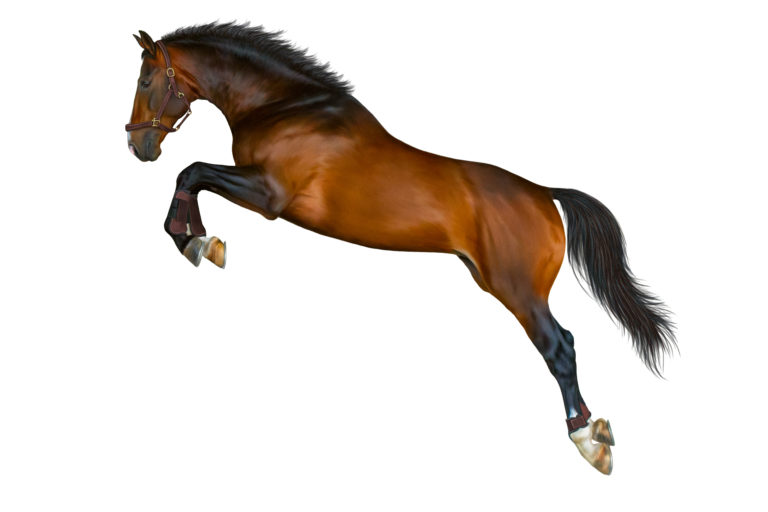Q: What are the five stages of jumping for the rider?
A: There are five stages of jumping for the horse, which are fairly self-explanatory. These are the approach, the take-off, the flight stage, the landing and the getaway.
The rider, however, must also follow these five stages, and therefore these stages are referred to as the five stages of jumping for the rider. The rider needs to do the following at each stage.
1. Approach
Your lower legs must be directly underneath you and close against the horse’s sides. Your seat bones should be slightly out of the saddle and your upped body inclined slightly forwards. Feel your weight as it is transferred through your knees onto the balls of your feet. Allow your hands to follow the horse’s movement as he stretches his neck and lowers his head in preparation for take-off.
2. Take-off
When the horse’s head and neck come up and he brings his hind legs underneath his body, take your weight out of the saddle to free up the use of his back. When the shoulders have come up, lean further forwards, bending from the hips. Allow your hands to freely follow the movement of his head.
3. Flight
Once the horse is in the air, sit still with your seat bones just out of the saddle and your lower leg under you and close to the girth.
4. Landing
When the horse’s forehand begins to lower, straighten your body gradually, while still keeping your weight out of the saddle and off the back.
5. Getaway
As the horse’s hind feet touch the ground and he gets ready to take the first canter stride, return to your take-off position – seat bones slightly out of the saddle, leaning slightly forwards. Be ready to drive the horse forwards with your legs and your seat.

